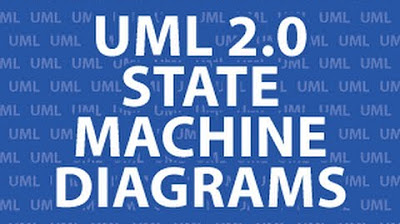Concept of Relationships in ER Diagram
Summary
TLDRThis video tutorial delves into the intricacies of relationships in ER diagrams. It explains relationships as connections between entities, with examples like a teacher-student link. The degree of relationships, ranging from unary to ternary, is outlined. Cardinality ratios, such as one-to-one, one-to-many, and many-to-many, are discussed with examples. Participation constraints, distinguishing between total and partial entity involvement, are clarified. The video also covers attribute migration in relationship types, role names in recursive relationships, and introduces alternative notations like min-max for specifying constraints. It concludes with an overview of a complete ER diagram for a company database, integrating all concepts discussed.
Takeaways
- 🔗 **Relationship Definition**: A relationship in an ER model is an association or connection among two or more entities.
- 🔢 **Degree of Relationship**: It indicates the number of entity types involved in a relationship, such as unary, binary, and ternary relationships.
- 📏 **Cardinality Ratio**: This defines the maximum number of relationship instances an entity can participate in, like one-to-one, one-to-many, many-to-one, and many-to-many relationships.
- 📋 **Participation Constraints**: These specify whether an entity's existence depends on its relationship with another entity, categorized as total or partial participation.
- 🏢 **ER Diagram Example**: The script uses a company database as an example to illustrate how to construct an ER diagram with identified entities, relationships, and their constraints.
- 📊 **Attributes of Relationship Types**: Attributes can be migrated to participating entities, with different rules for one-to-one, one-to-many, and many-to-many relationships.
- 🎭 **Role Names**: Important in recursive relationships where the same entity type participates more than once, playing different roles.
- 🔄 **Alternative Notations**: ER diagrams can use alternative notations like min-max pairs to represent participation and cardinality constraints.
- 📈 **Enhanced ER Model (EER Model)**: Introduces concepts like generalization and specialization, which are approaches to define relationships between entities in a more complex model.
- 📘 **Recursive Relationships**: Special types of relationships where an entity participates more than once, requiring role names for clarity.
Q & A
What is a relationship in an ER diagram?
-A relationship in an ER diagram is an association, connection, or link among two or more entities, representing how they are interconnected.
What is the degree of relationship and what does it represent?
-The degree of relationship denotes the number of entity types that participate in a relationship, indicating how many entities are associated or linked together.
What are the different types of relationships based on degree?
-The types of relationships based on degree include unary (one entity), binary (two entities), and ternary (three entities) relationships.
What is a cardinality ratio in the context of ER diagrams?
-Cardinality ratio is the maximum number of relationship instances that an entity can participate in, defining the possible number of connections between entities.
Can you provide examples of different cardinality ratios?
-Examples of cardinality ratios include one-to-one, one-to-many, many-to-one, and many-to-many relationships.
What are participation constraints and what do they specify?
-Participation constraints specify whether the existence of an entity depends on its being related to another entity, and can be either total or partial.
How are total and partial participation represented in an ER diagram?
-Total participation is represented by a double line, while partial participation is represented by a single line in an ER diagram.
What are the attributes of relationship types and how are they handled?
-Attributes of relationship types can be migrated to participating entity types based on the relationship's cardinality, with different rules applying for one-to-one, one-to-many, and many-to-many relationships.
What are role names in ER diagrams and when are they necessary?
-Role names signify the role a participating entity plays in a relationship and are necessary in recursive relationships where the same entity type participates more than once in different roles.
What is an alternative notation for specifying relationship constraints in ER diagrams?
-An alternative notation for specifying relationship constraints in ER diagrams is the min-max notation, which associates a pair of integer numbers with each participation of an entity type in a relationship type.
What are generalization and specialization in the context of an Enhanced ER (EER) model?
-Generalization is a bottom-up approach where lower-level entities combine to form a higher-level entity, while specialization is a top-down approach that defines a set of subclasses of an entity type.
Outlines

This section is available to paid users only. Please upgrade to access this part.
Upgrade NowMindmap

This section is available to paid users only. Please upgrade to access this part.
Upgrade NowKeywords

This section is available to paid users only. Please upgrade to access this part.
Upgrade NowHighlights

This section is available to paid users only. Please upgrade to access this part.
Upgrade NowTranscripts

This section is available to paid users only. Please upgrade to access this part.
Upgrade NowBrowse More Related Video

Modellierung von Datenbanken - Erstellung eines ERM

Example 1: Transforming ER Diagrams to a Relational Schema

Curso completo de Raciocínio Lógico para Concursos Públicos 2019 Aula 19

UML 2 State Machine Diagrams

DBMS - Symbols in ER-Diagram

How To Read, Understand, And Use A Wiring Diagram - Part 1 - The Basics
5.0 / 5 (0 votes)